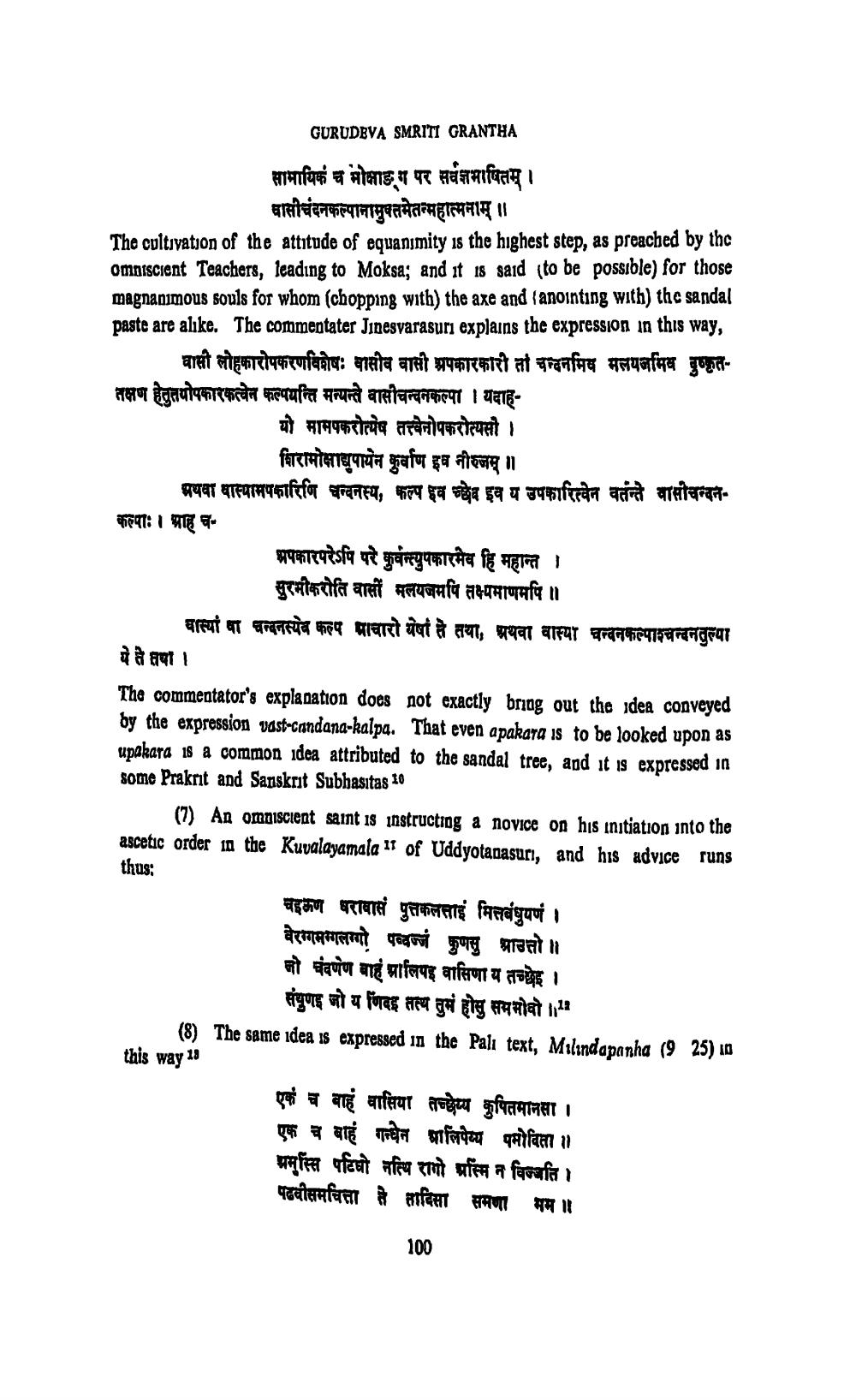________________
GURUDEVA SMRITI GRANTHA सामायिकं च मोक्षाङ्ग पर सर्वज्ञभाषितम् ।
पासीचंदनकल्पानामुषतमेतन्महात्मनाम् ।। The cultivation of the attitude of equanimity is the highest step, as preached by thc omniscient Teachers, leading to Moksa; and it is said to be possible) for those magnanimous souls for whom (chopping with) the axe and (anointing with) the sandal paste are alike. The commentater Jinesvarasuri explains the expression in this way,
___घासी लोहकारोपकरणविशेषः वासोव वासी अपकारकारी तो चन्दनमिव मलयनमिव तुष्कृततक्षण हेतुतयोपकारकत्वेन कल्पयन्ति मन्यन्ते वासीचन्दनकल्पा । यदाह
यो मामपकरोत्येष तत्वेनोपकरोत्यसो ।
शिरामोसाधुपायेन कुर्वाण इव नीरजम् ॥ अथवा पास्यामपकारिणि चन्दनस्य, कल्प इव च्छेव इव य उपकारित्वेन वर्तन्ते वासोचन्दनकल्पाः । पाह च
अपकारपरेऽपि परे कुर्वन्त्युपकारमेव हि महान्त ।
सुरभीकरोति वासों मलयजमपि तक्ष्यमाणमपि ॥ पास्यां वा चन्दनस्येव कल्प पाचारो येषां ते तथा, अथवा वास्या चन्दनकल्पाश्चन्दनतुल्या येते तपा। The commentator's explanation does not exactly bring out the idea conveyed by the expression vast-candana-kalpa. That even apakara is to be looked upon as upakara is a common idea attributed to the sandal tree, and it is expressed in some Prakrit and Sanskrit Subhasitas 10
(7) An omniscient saint is instructing a novice on his initiation into the ascetic order in the Kuvalayamala 11 of Uddyotanasuri, and his advice runs thus;
चइमण धरावासं पुत्तकलताई मितबंधुयणं । बेरगमगलग्गो पब्वन्नं कुणसु आपत्तो॥ जो चंदणेण बाहं प्रालिपइ वासिणा य तच्छेइ ।
संधुणइ जो य गिदइ तत्य तुम होसु सममोवो।। (8) The same idea is expressed in the Palı text, Milindapanha (
9 25) 10 this way 10
एकं च बाहं वासिया तच्छेप्य कुपितमानसा । एक च बाहं गन्धेन प्रालिपेथ्य पमोविता ॥ अमुसि पटियो नत्थि रागो अस्मि न विन्धति । पढवीसमचित्ता ते तादिसा समणा मम ॥
100




